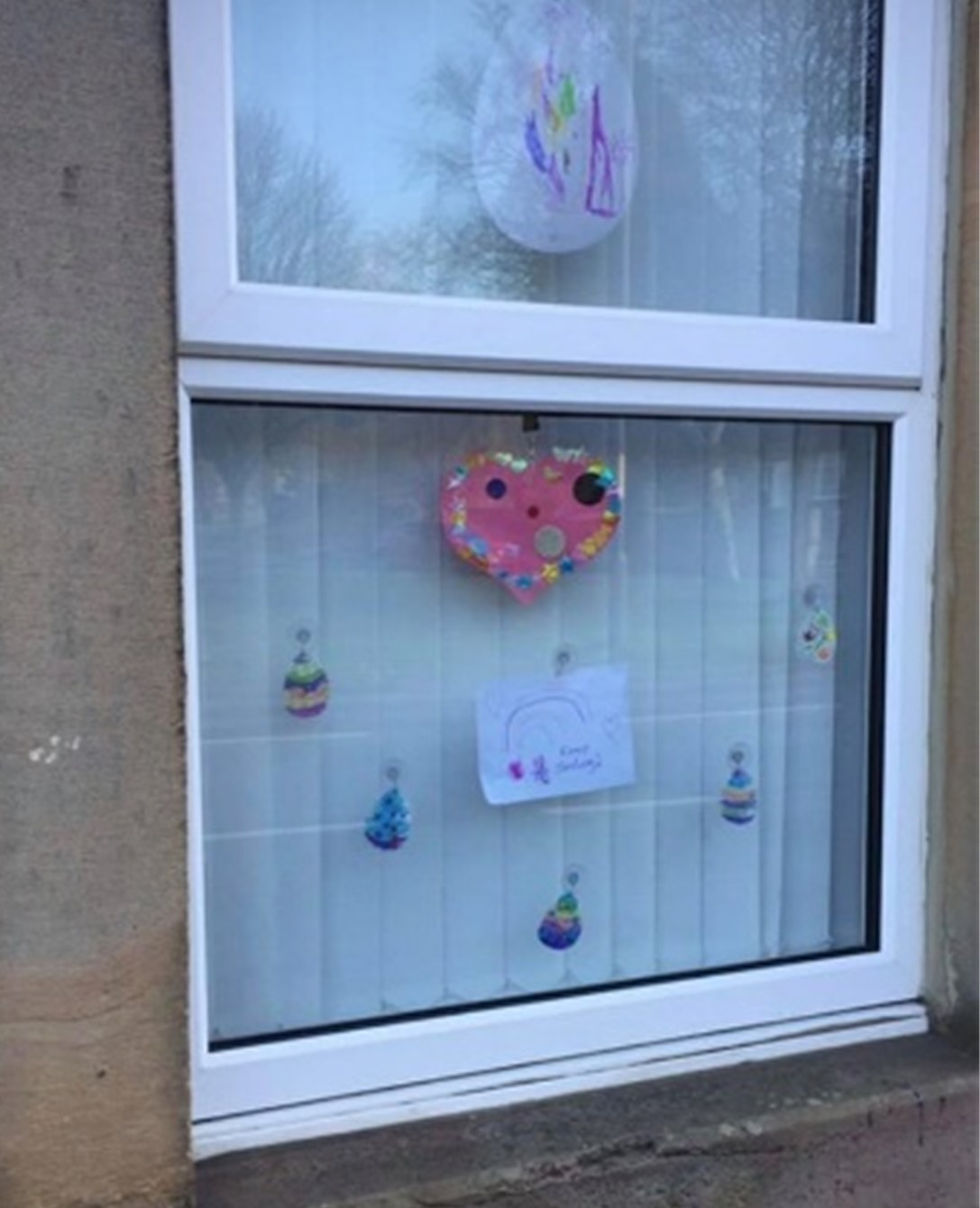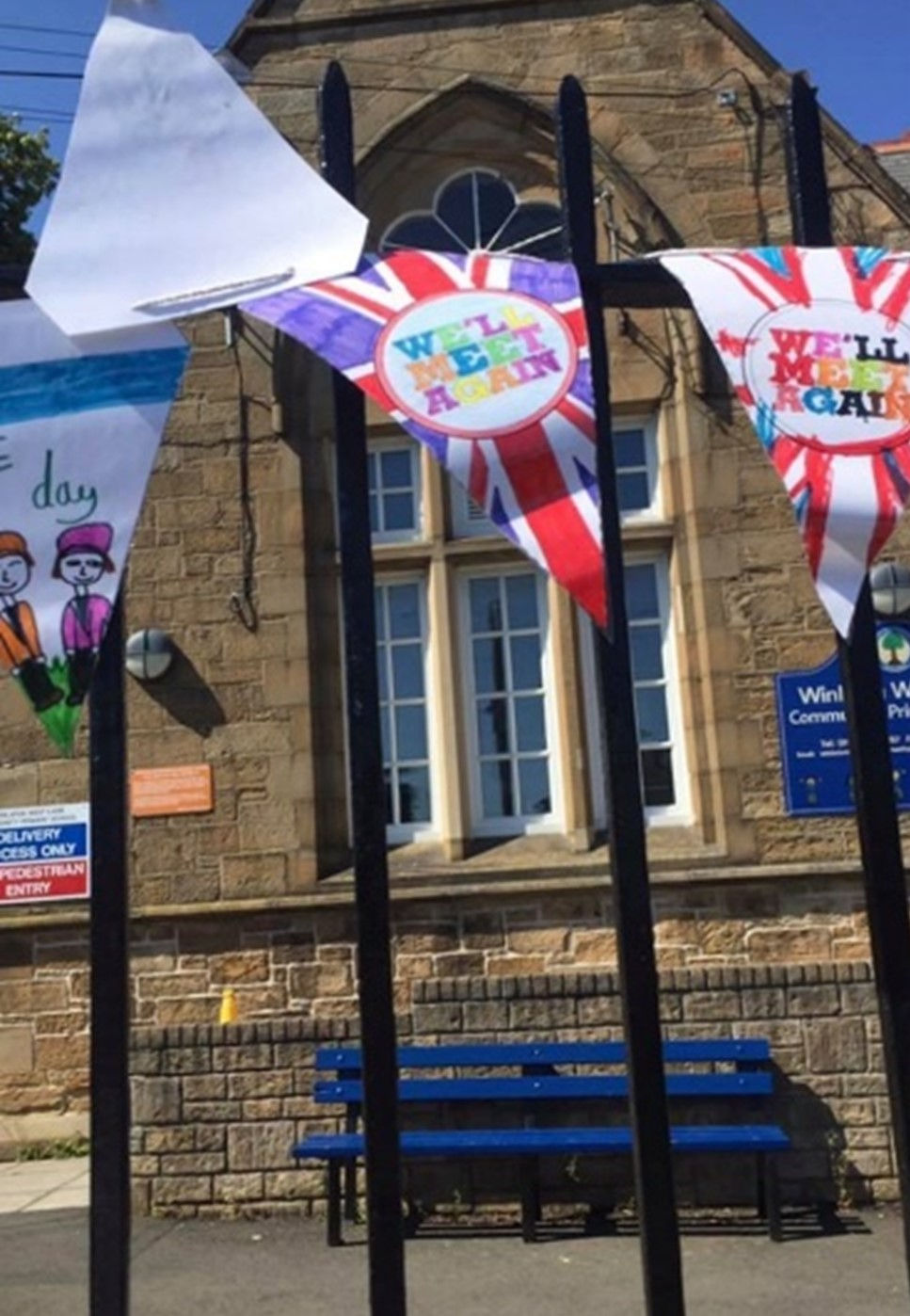The Visual Legacy of Disease in North East England: From 1600 to 16:00 Today
- Emma Yeo
- Oct 31, 2021
- 7 min read
In this blog I briefly recount earlier reactions to disease in my home region, the North East of England, before focusing on my own findings from keeping a photographic diary throughout the coronavirus pandemic. How have the ways in which we remember the victims of disease changed over time and how might our own relationship with the pandemic shift as it fades into history?
First, to early modern England, and seventeenth century Durham. Located around twenty miles from the regional hub Newcastle and a small market city both then and now, Durham has a wealth of archival materials relating to experiences of disease in the early modern period.
In a society in which the boundaries of the parish were celebrated and reinforced annually, the siting of visual markers of remembrance within an individual’s parish was highly significant.1 Memorials to deceased parishioners within the parish church could be complex and highly visible. In the parish church of Saint Oswald’s in Durham City memorials to local gentry include elaborate Latin inscriptions and depictions of the individual in question.
It was not only the visible space of the church which could provide an important site for collective memory and mourning. In Eggleston in the later seventeenth century, Christopher Sanderson lost his grandson Thomas Aubone.2 While Philippe Ariès’ assertion that the ubiquitous nature of death in the early modern period led to reduced fear comparative to today has merit, it is also easy within Sanderson’s diary to see his sadness on the loss of
young Thomas.3 The combination of both religious hope and community support was vital to Christopher and his family: after the loss he focused his attention on the boy’s burial beneath the family’s pew in the local church.4 This allowed for a connection with his deceased family member long beyond the moment of death. Each Sunday when they attended worship, the family would be brought both physically and spiritually closer to their lost relatives.
But what of those who died during plague outbreaks? They were often separated from their loved ones in their final days, removing themselves to lodges in nearby fields to protect others from contagion, or were shut up in their homes.5 In light of the large number of deaths occurring during a short period of time, as well as fear of contagion, the comforting ceremonies provided by collective mourning in the church would not be possible in the usual way.6 Likewise, in the case of the 1640s Durham plague outbreak burials were explicitly to occur in a quiet manner with minimal ceremony to prevent large gatherings.7
Disease therefore separated the diseased not only physically but socially from the healthy, creating a divide which is impossible to bridge. There is no moment of reconciliation in this lifetime; the plague victim belongs to the world of the searchers and the watchmen not to the world of their healthy kinsfolk and townspeople.8 While literary texts often boast lurid images of plague victims or dancing skeletons, as this sixteenth century German woodcutting demonstrates, administrative texts dealt with the realities of the plague in far more brusque terms.
Fig. 1. Woodcut of plague patients from sixteenth century Germany. Image from Wikimedia commons.

Lacunas in registrations of demographic data in many early modern North East English parishes during significant plague years shows the impact of outbreaks upon the functioning of ordinary life.9 In the longer term these episodic outbreaks could be used by religious figures as possible indicators of the looming Second Coming of Christ, with religion providing an opportunity to reformulate devastating experiences.10 In print, the plague victim therefore looms large even as their physical remains are cast into large communal burial grounds or denied ritual burial rites.11
Thinking very briefly about later experiences of disease in my community, it is the cholera monument which stands close to my grandparents’ house which comes to mind. A tall stone needle nestled within the graveyard, like its early modern textual counterparts this monument to disease victims provides a reminder of the fragility of life:
Fig. 2. Cholera Monument photograph, image © Peter Hughes, used under a CC-BY-NC-SA 2.0 license https://creativecommons.org/licenses/by-nc-sa/2.0/

IN THE MIDST OF LIFE WE ARE IN DEATH. WATCH THEREFORE12
It is both honest and understated in its treatment of the over two hundred victims of the 1831-1832 cholera outbreak: providing a resting place for their bodies and a reminder of our own imminent demise. The victims are disembodied, devoid of identity. They are merely “persons” struck down over the course of the epidemic.
With these examples as the backdrop, we come finally to the most prescient example of disease in North East England: the current pandemic. From mid February 2020 I maintained a photographic journal focusing on my experiences of the pandemic in both Gateshead and Durham. Many images show places oddly devoid of human occupation and reflect the ebb and flow of restrictions in England rather than any real communal response to the pandemic. There are, however, a small number of images which I believe provide a clue as to how we may come to assimilate our pandemic experiences into our lives going forward and as communities cope with the aftershocks that may find us.
The first image is of a window in a house I passed on a walk at the beginning of the first national lockdown, with beautiful illustrations co-created by a child and their caregivers specifically designed to spread joy within the community at Easter.
Fig. 3. A family home during lockdown. Image author’s own (22nd March 2020)

The message urged us to “keep smiling”; the realities of serious illness occurring behind closed doors in many local homes does not feature in many of these early artworks. Other images taken at similar early stages in the pandemic are similarly sanitised: a church covered in beautiful rainbow drawings (14th April), images relating to the ‘NHS clap’ (16th April) and a paper heart tied to a tree telling onlookers to ‘be kind’ (27th April).
It is much later in the first wave of the pandemic when reality is allowed to intercede. The first hints of this can be seen in the artwork produced by school children in early May.
Fig. 4 ‘We’ll Meet Again’. Image author’s own (6th May 2020) Their bunting harkens back to World War II and the haunting music of Vera Lynn, with the loss inherent in war and disease inexorably tied together.

Fig. 5. What Lies Over the Rainbow? Image author’s own (5th May 2020).

Fig. 6. (You Must) Stay Home. Image author’s own (5th May 2020)

The rainbow imagery of these farm artworks is even more explicit. For context, these were located in an extremely rural area and the bright colours used are directly at odds with the reality occurring both in the physical space surrounding them and in the textual messages themselves. The farmland desolate and the local village devoid of life: I walked for hours encountering few people that day. “SAVE LIVES” and “STAY SAFE” are commandants issued by this local citizen as well as the government but unlike in the days of early modern plagues and attempts to find spiritual meaning in their own disease outbreaks, these messages focus entirely on the preservation of life.
Compare them to the bleak remembrances of the seventeenth and nineteenth centuries and we see an almost complete denial of the realities underpinning the pandemic, that is, that so many will tragically die. This reality is entombed in bright pink plastic and neon lettering. The rainbow is said to peek out from beneath the clouds.
Moving forward, these cheerful images quickly fade. By summer 2020 people are moving forward and when the virus resurfaces with a vengeance there appears no solace in these cheerful images of togetherness. In my later photographs the final image akin to these, but with a far more solemn message, was of this painted rock hidden in a local park by a Christian organisation intended to tell onlookers of the powers of the divine.
Fig 7. Hope Rocks. Image author’s own (6th November 2020).

This brings us to today and the lesson I believe we must learn from our less fortunate predecessors in the historical past who both remembered the victims of disease outbreaks and sought to rebuild together. The 1832 cholera outbreak led to the founding of a dispensary in Gateshead.13
Our first reaction to the pandemic was to search for flowery expressions of togetherness couched in euphemism and excess hope. Today many of us are jaded by our experiences over the past two years. We must instead find a middle ground, in which we do not forget those lost to the virus by attempting to paint over what has happened. We must, I believe, become more comfortable with the reality that we will never be exactly as we were before.14 The pandemic is not ‘over’ and, in our collective imaginations, cannot be so until we accept its legacies.
Bibliography
[1] Steve Hindle, ‘Beating the Bounds of the Parish’ in Michael J. Halvorson and Karen E. Spierling (eds.), Defining Community in Early Modern Europe (Routledge, 2008), pp. 205-227.
[2] Durham University Archives (Durham, England), Add.MS.1675.
[3]Phillippe Ariès, The hour of our death (New York, 2000), p. 300; K.D.M. Snell, ‘Gravestones, Belonging and Local Atachment’, Past and Present, No. 179 (2003), pp. 97-134.
[4] For examples of the importance of the pew within early modern life, see late eighteenth-century Durham court cases involving disputed pew possession. Durham University Archives, DDR/EJ/CCD/3/1764/7, Frances Elison vs Peter Bowlby; DDR/EJ/CCD/3/1770/21, Robert Hall vs George Wood.
[5] Richard Cotes (printer), Certain orders thought meet to be put in execution against the infection of the plague (1646), available online through Early English Books Online, ref. E2791C; Durham University Archives, Mickleton and Spearman 9; Henry Barnes (ed.), On Quarter Sessions orders relating to the plague in the county of Durham in 1665 (Newcastle, 1889).
[6] Durham University Archives, Add.MS. 866, Diary of Thomas Chaytor.
[7] Durham University Archives, MSP 9.
[8] Kira L.S. Newman, ‘Shutt Up: Bubonic Plague and Quarantine in Early Modern England’, Journal of Social History, Vol. 45, No. 3 (2012), pp. 809-834.
[9] Newcastle City Library, Wood bequest parish register transcripts.
[10] Jenison, Newcastle’s Call to Her Neighbour (London, 1637), accessed through Early English Books Online.
[11] J. Raine (ed.), Depositions and other Ecclesiastical Proceedings from the Courts at Durham (London, 1845), pp. 276-281.
[12] Inscription on monument, see Fig. 2.
[13] Ellen Tullo, ‘Plague of Icy Breath: Cholera and the Gateshead Community 1831-1832’, Gesnerus, Vol. 67, No. 1 (2010), pp. 6-29.
[14] My approach for this blog owes a debt of gratitude to my earlier autoethnographic consideration of the COVID-19 pandemic alongside other PhD students – see Nikki Rutter et al., ‘It’s the End of the PhD as We Know it, and We Feel Fine… Because Everything is F****d Anyway’: Utilizing Feminist Collaborative Autoethnography to Navigate Global Crises’, International Journal of Qualitative Methods (2021).

Comentarios